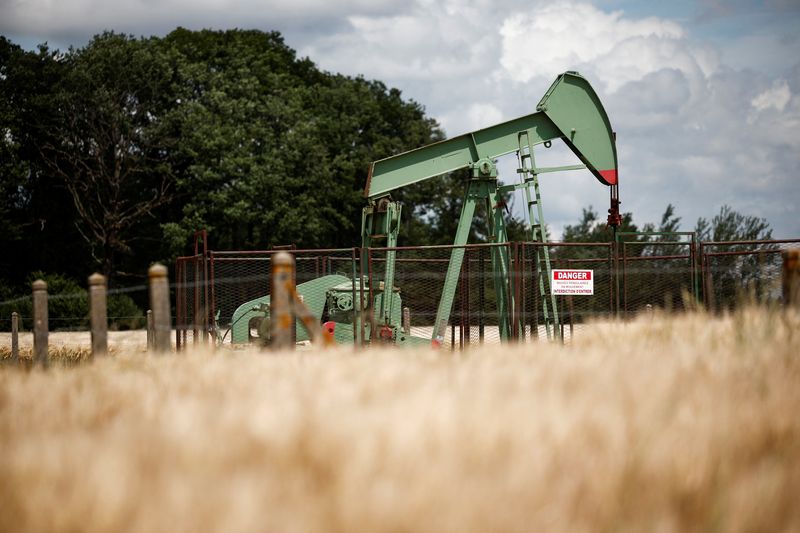Commodities
Oil settles $1 down as supply set to rise, uncertainty around Fed rate cuts

By Georgina McCartney
HOUSTON (Reuters) -Oil prices retreated on Friday as investors weighed expectations of a rise in OPEC+ supply starting in October, alongside dwindling hopes of a hefty U.S. interest rate cut next month, following data showing strong consumer spending.
futures for October delivery, which expire on Friday, settled $1.14 lower, or 1.43%, at $78.80 a barrel, marking a decline of 0.3% for the week and 2.4% for the month.
U.S. West Texas Intermediate crude futures settled down $2.36, or 3.11%, to $73.55, a drop of 1.7% in the week and a 3.6% decline in August.
The Organization of the Petroleum Exporting Countries and allies, known as OPEC+, is set to proceed with a planned oil output hike from October, as the Libyan outages and pledged cuts by some members to compensate for overproduction counter the impact of sluggish demand, six sources from the producer group told Reuters.
“OPEC+ talking about going ahead with tapering off production cuts was the headline that really sunk us today,” said Phil Flynn, analyst with Price Futures Group.
Meanwhile, investors responded to new data that showed U.S. consumer spending increased solidly in July, suggesting the economy remained on firmer ground early in the third quarter and arguing against a half-percentage-point interest rate cut from the Federal Reserve next month.
Lower rates can boost economic growth and demand for oil.
“That modest inflation increase could basically solidify that we will only get a quarter percentage-point cut and those hoping for a half will have to wait,” said Price Futures Group’s Flynn.
Elsewhere, Libya’s National Oil Corporation said recent oilfield closures have caused the loss of approximately 63% of the country’s total oil production, as a conflict between rival eastern and western factions continues.
Production losses could reach between 900,000 and 1 million barrels per day (bpd) and last for several weeks, according to consulting firm Rapidan Energy Group.
Libya’s eastern-based government announced the closure of all oil fields on Monday, halting production and exports and driving oil to settle at a near-two week high on Aug. 26.
“It is interesting see the shutdown of Libya’s production have such an impact on market prices one day and completely ignored the next,” said Tim Snyder, chief economist at Matador Economics.
“It looks to me right now there is a lot of negative inertia in the market pulling prices down,” Snyder added.
Iraqi supplies are also expected to shrink after the country’s output surpassed its OPEC+ quota, a source with direct knowledge of the matter told Reuters on Thursday.

Iraq plans to reduce its oil output to between 3.85 million and 3.9 million bpd next month.
In the U.S., the number of active oil rigs was unchanged at 483 this week, but rose by one in August, Baker Hughes said.
Commodities
Oil prices rise; U.S. crude inventories plunge, Russia-Ukraine truce eyed
Commodities
India’s Reliance to stop buying Venezuelan oil over US tariffs, sources say
Commodities
Oil prices climb on Venezuela supply worries

 Forex3 years ago
Forex3 years agoForex Today: the dollar is gaining strength amid gloomy sentiment at the start of the Fed’s week

 Forex3 years ago
Forex3 years agoUnbiased review of Pocket Option broker

 Forex3 years ago
Forex3 years agoDollar to pound sterling exchange rate today: Pound plummeted to its lowest since 1985

 Forex3 years ago
Forex3 years agoHow is the Australian dollar doing today?

 Cryptocurrency3 years ago
Cryptocurrency3 years agoWhat happened in the crypto market – current events today

 World3 years ago
World3 years agoWhy are modern video games an art form?

 Commodities3 years ago
Commodities3 years agoCopper continues to fall in price on expectations of lower demand in China

 Economy3 years ago
Economy3 years agoCrude oil tankers double in price due to EU anti-Russian sanctions

























